The Honda Civic is one of the world’s most recognised nameplates, which dates back to the 1970s. In your daily commute, you will see at least one Civic from any one of its nine iterations on the road.
However, Honda hasn’t always made every generation of the Civic perfect. While some proved to be highly memorable, and even coveted (fifth-gen EG, eighth-gen FD), others just felt a little lacklustre (seventh-gen ES, ninth-gen FB) by comparison.
Therefore, to bring the Civic into its tenth-generation, Honda has decided to revitalise its best-selling model of all time from the ground-up. Forget about the FB because everything’s new here, from the platform to the engine, even the design, which is now led by a North American team this time around.
Touted as the best Civic ever, it is a very bold claim, one that could certainly fluff up the expectations of the masses. Adding to this hype is the fact that Honda benchmarked its new Civic against makes from BMW and Audi, rather than its Japanese counterparts. We’ve already had a go in the new Civic in Thailand, and were left impressed by it there. Now, it’s time to find out if the tenth-generation model meets the hype on Malaysian soil – Kota Kinabalu, Sabah – specifically. Read on.
There’s no running away from the fact that the Civic FC’s design will draw more than a few eyeballs to it. Park it beside the New York concept from 2015, and you’ll notice the many attractive lines and angles have made their way to the production car.
Eye-catching details include the coupe-like roofline that is paired with a fastback style body. Elsewhere, there are the sculpted engine cover and prominent wheel arch lines, character line that intercepts through the door handles and the Solid Wing Face.
If it appears long, that’s because it is. At 4,630 mm long and 1,799 mm wide, the new Civic sees 105 mm tagged on to its length and 44 mm added to its width when compared to its predecessor. Combined with the 19 mm height reduction, the Civic cuts a wide and low stance that certainly looks good, at least to my eyes.
Some spiffy kit accompanies this fresh new look on our Malaysian edition as well. The top-spec Civic 1.5TC Premium we drove gets full-LED headlamps (with DRLs), crab claw-style LED tail lights, chrome door handles and 17-inch five-spoke wheels (wrapped with 215/50 ContiMaxContact MC5 tyres).
For the non-Premium Turbo and NA variants, halogen projectors will provide illumination and body-coloured door handles are fitted instead. The NA model also receives smaller 16-inch alloys, but with larger profile 215/55 tyres.
Much like the exterior, the Civic’s cabin also receives a total overhaul, starting with a dashboard that appears to be influenced by the smaller Jazz and City. The driver-focused two-tier layout is also gone here, replaced with a single instrument binnacle and an upright centre stack that is no longer angled towards the driver.
From the driver’s seat, you can position yourself to sit pretty low with the eight-way powered seats. The materials used and finish quality is improved as well, with soft-touch plastic covering the dash, while other areas feature stitching and metallic elements to enhance their visual impact.
Plenty of toys to play with too, like the virtual tachometer and a digital speedometer, which can be customised by way of the seven-inch touchscreen factory head unit. Said unit is an Android-based one, and allows users to access media and navigation functions, as well as being a display for the reverse camera.
It also gets the usual set of inputs – Bluetooth, AUX, USB and HDMI – with nice additions being Apple CarPlay and Android Auto. The latter however, will require you to source the app from a third party as the Android marketplace in Malaysia doesn’t officially serve it up as of yet.
Functionality-wise, the unit is pretty intuitive and easy to navigate within the first few minutes. However, Turbo owners who prefer to manually-operate their air-con fan speed will need to do so via the touchscreen and ‘Climate’ button. If you’re content with the dual-zone air-con system being in ‘Auto’, it isn’t much of an issue.
In terms of day-to-day practicality, the Honda Civic has all its rivals beat thanks to some impressive packaging. I’ll just detail some of the nifty things that I liked, starting with the tunnel below the centre stack (like the HR-V), which features the car’s charging ports and HDMI input. You could leave your phone charging in that slot or have it placed in the small slot along the sides of the centre tunnel.
If your phone is serving as a navigator, and is mounted on the windscreen, there’s also a small hole above the tunnel, allowing you to snake a charging cable through it. Aside from phones, there’s also no shortage of space to put your other items – SmartTAG, keys, wallet, etc. That big gaping hole in the centre console is deep enough to swallow almost anything, including two cup drinks if needed.
Within the cabin of the Civic, regardless of variant, you’ll be surrounded by six airbags (dual front, side, curtain). Since we’re on the topic of safety, Vehicle Stability Assist (VSA), ABS, hill start assist and an electronic parking brake with auto brake hold form some of the standard kit.
Now we come to the headline act of the new Civic – the new 1.5 litre VTEC Turbo engine, which apparently 70% of buyers had a preference for, according to Honda CEO, Katsuto Hayashi. The L15B7 direct-injection turbo unit produces 173 PS at 5,500 rpm and 220 Nm of torque from 1,700 to 5,500 rpm, and replaces the previous 155 PS/190 Nm 2.0 litre NA engine. Also, the previous five-speed auto from before is replaced with a CVT.
On the road, the powertrain is ideal for cruising around the city of Kota Kinabalu with relative ease. The early arrival of low-end torque is certainly appreciated to assist with overtakes, and the CVT, despite the stigma, is quick and responsive if you’re gentle with the accelerator.
During our drive, we were led to two locations that required going through several uphill sections to Kokol Haven and Mount Kinabalu Park – a good test of the engine’s pulling capabilities. Suffice to say, once the turbo kicks in from 1,700 rpm upwards, the Civic just pulls and pulls its way, with minimal fuss and the sound of an engine being strained. Some CVT noise is still noticeable but not overly intrusive.
For the lead-footed, it’s a different story as the response of the powertrain is a tad slow. Put your foot down, and the CVT will take a moment to virtually “step down a gear,” before delivering the turbo engine’s power in one big lump. Efficiency is the priority here, but there’s no shortage of performance on hand, if needed.
Our drive around Kota Kinabalu included a mix of highways as well as a several towns. Across all of them, the Civic delivered a comfortable ride that managed to isolate occupants from the road deformities. NVH levels are also kept in checked, with just a hint of tyre roar.
As mentioned earlier, winding uphill roads were also part of the agenda, which allowed us to let the Civic off its leash a little. No beating around the bush here, this thing handles very well, and was confidence-inspiring as we carved our way up and down the roads.
Understeer here is kept in check, and arrives progressively rather than in one fell swoop, even with the sound of the screeching tyres. Steering feel is also pretty good, although the variable “gear” ratio may make it a little too artificial for some. Still, it does have its place for in the daily drive, which is much welcomed.
For a bit of perspective, the organisers even brought along a Mazda 3 and a Toyota Corolla Altis for us to have a go at the pseudo “hill rally.” To keep things short, the Mazda certainly does well when it comes to focusing on driver appeal, but lacks the uphill oomph the Civic can provide.
The Toyota meanwhile, suffered from the same issue as the Mazda, but with a lot more noise from its powertrain (CVT whine), as it tried to pull itself along. However, it did provide for a slightly more comfortable ride when compared to the Civic.
Swapping from the driver’s seat to the rear ones, the seating position is pretty low, possibly to accommodate the reduced vehicle height and sloping roof. However, for this 170 cm-tall writer, this isn’t much of an issue, as there were still ample amounts of room for my head, legs and knees.
Additionally, the seating position is a little slanted at the back, and there is a plastic panel between the door and rear bench, which made for some awkward arm placement on the door armrest. As such, you will need to adjust your posture to be firmly seated here.
No split-folding seats either as there is a back brace in the way, which we were told by Hiroshi Ito, assistant large project leader of the all-new Civic, is there to provide extra rigidity for the car. For a bit of info, the new platform is 25% stiffer compared to its predecessor. Not to worry as there is up to 519 litres of boot space by default already, up from 460 litres.
The Civic FC is a triumphant return for Honda, being one of the best all-rounders in the segment. With a highly capable powertrain, coupled with impressive driving dynamics, a good ride, robust design and impressive day-to-day practicality, it is no doubt the Civic FC does live up to the hype.
Honda Civic media drive official photos
Looking to sell your car? Sell it with Carro.

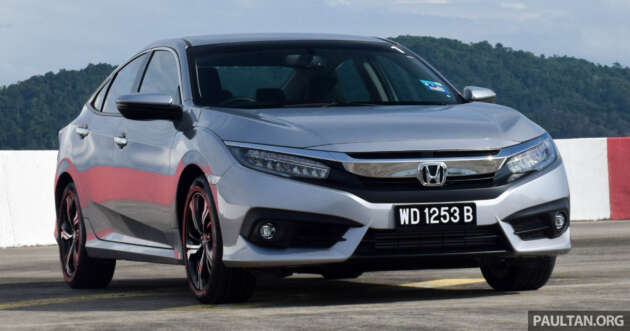
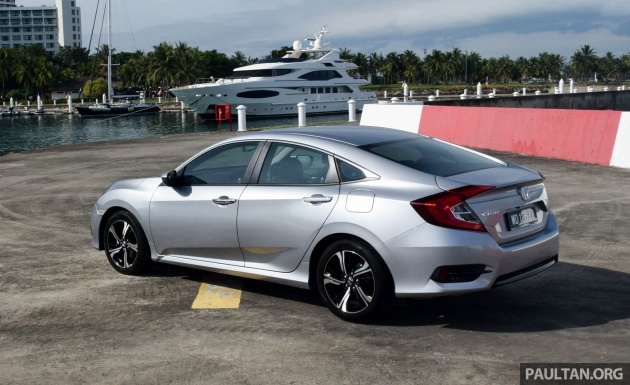


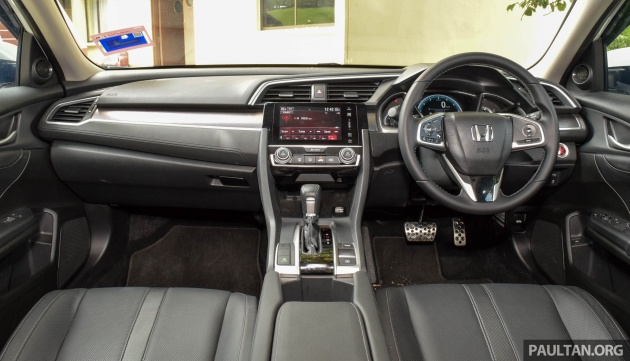




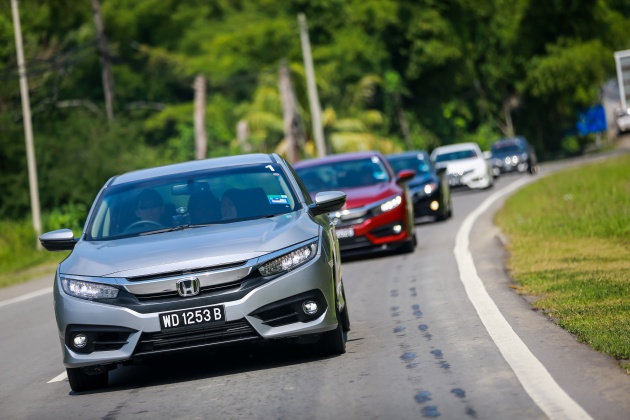


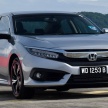
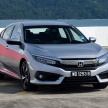
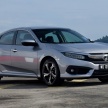
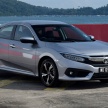
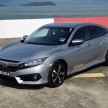
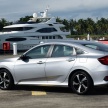
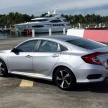

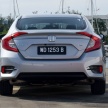
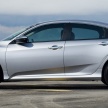
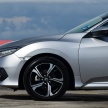
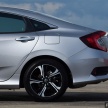

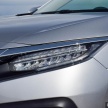
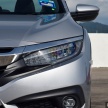
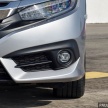
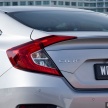
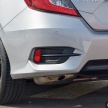
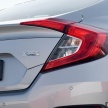
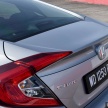
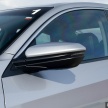

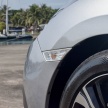
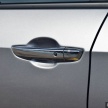
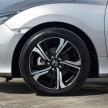
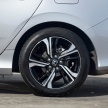
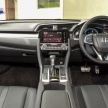
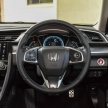
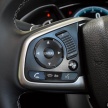
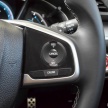
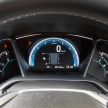
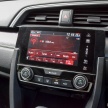
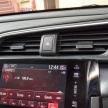
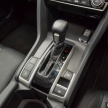
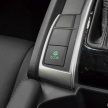
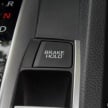
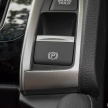
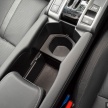

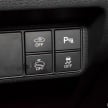
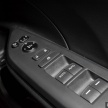
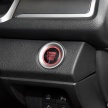
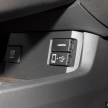
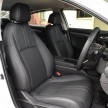
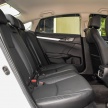
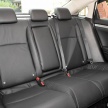
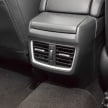
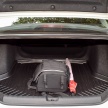
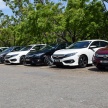
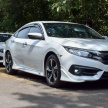
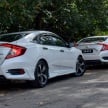
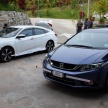


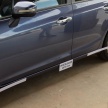
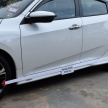
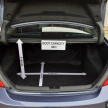
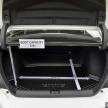
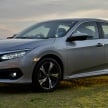
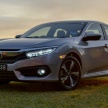
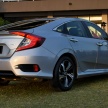
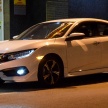
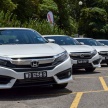
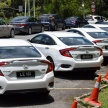
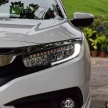
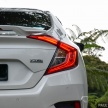
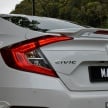
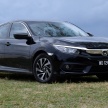
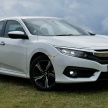
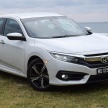
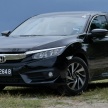
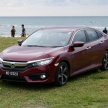
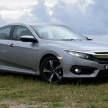
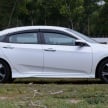
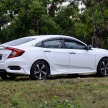
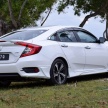

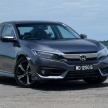
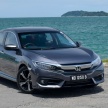
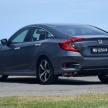
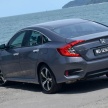
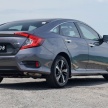
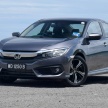
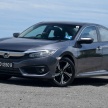
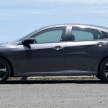
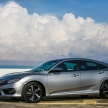
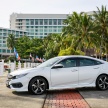


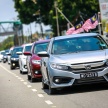
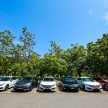


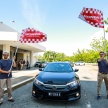

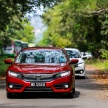
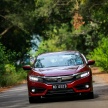
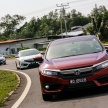
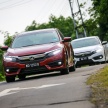
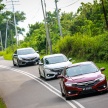
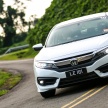
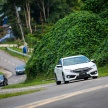
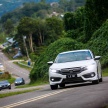
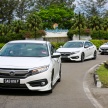



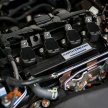
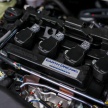
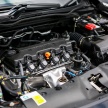

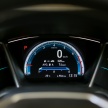
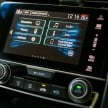
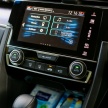
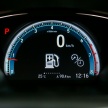
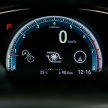
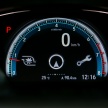
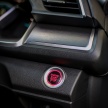
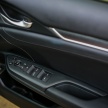
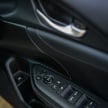
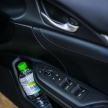
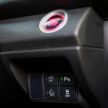
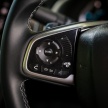
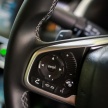
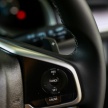
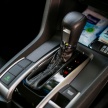

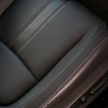
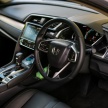
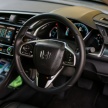
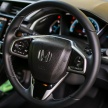
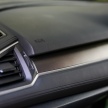
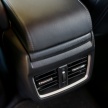
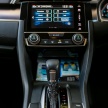
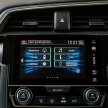
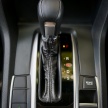
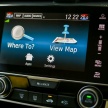
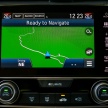
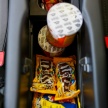
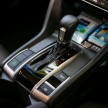
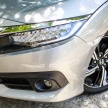
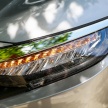
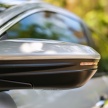
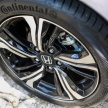
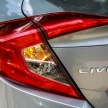
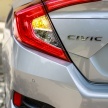
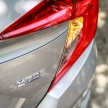
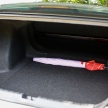
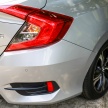
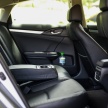
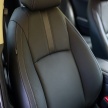

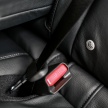
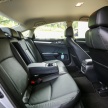
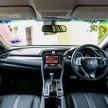
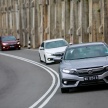
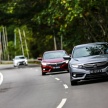
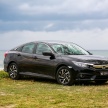
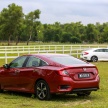
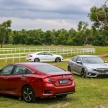
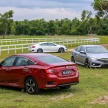
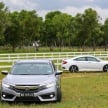
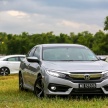
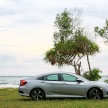
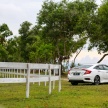
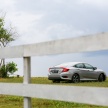
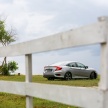
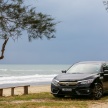

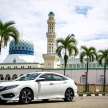
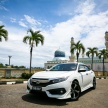
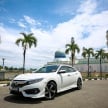
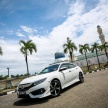
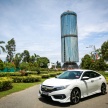
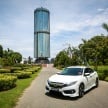



















AI-generated Summary ✨
Comments mainly praise the 2016 Honda Civic 1.5L VTEC Turbo for its performance, design, and fuel efficiency, with some indicating satisfaction after a few months of ownership. Concerns include NVH levels, rear seat practicality due to the back brace, and interior quality, with some owners comparing it unfavorably to other brands like Mazda or Toyota. There are mixed opinions on the CVT transmission, with some finding it acceptable and others criticizing it for performance issues. A few comments discuss the car's reliability, noise levels, and comparison with other vehicles such as the Toyota Altis and Mazda 3. Overall, sentiments reflect admiration for the Civic's modern design and engine, but also highlight areas for improvement, especially NVH and practicality.